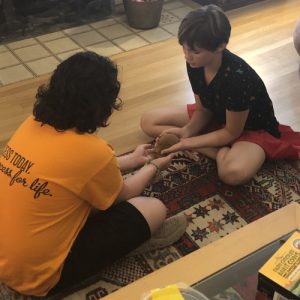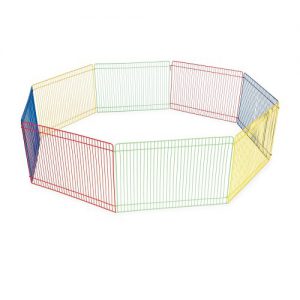Handling






Hubba-Hubba Hamsters are bred to have calm and friendly temperaments and come used to being held. They should be ready to handle within a couple days of coming home. However, there are still some important things to know to ensure handling is a good experience for you and your hamster.
Moving is very stressful for a hamster and it is best to let your hamster settle in before beginning to handle them. Hamsters have poor eyesight and a very highly tuned sense of smell. Be sure to wash your hands before touching and your hamster. Most long-time hamster owners have had an experience where they forgot to wash their hands and their hamster tasted their finger which still smelled like their lunchtime sandwich. Also, washing your hands before handling your hamster prevents spreading germs and parasites from other animals to your hamster and washing your hands after protects you.
The best time to hold your hamster is when they’re awake and walking around. If you plan to wake your hamster up, start by talking to them and moving around until they seem fully awake. While unlikely, waking a sleeping hamster by touching them risks getting bitten as a sleepy hamster, who has very poor vision to begin with, might not immediately realize you’re not a predator. For that reason, try not to put your fingers in your hamster’s face.
As prey animals, seeing a hand come from above to grab them can sometimes be scary for a hamster. A good way to pick them up is to scoop them up from underneath their bodies until they are very used to you. I use a scissor-like motion and cup them between two hands. If your hamster is young, extra active or jumpy, another alternative is to corral them into a container and pick them up in that. It is best to find a way to pick up your hamster which doesn’t make them think you’re chasing them. Once you have settled into a routine and you and your hamster know each other, it will be easy to scoop them up for play time.
Young hamsters are spring-loaded and no matter how tame they are, they can bounce out of your hands without notice. For that reason, picking them up and putting them in a “snuggle sack” (a hamster-sized fabric pouch) is wise. Snuggle sacks can be purchased online or you can use a household item like a small cloth bag or a winter hat. The smell of this item will become familiar to your hamster and they’ll begin to associate it with the treats you hide inside. Most importantly, the odds of dropping your hamster are much lower when carrying them in a snuggle sack.
Once you have your hamster out of the cage and in a snuggle sack, find a place to go sit down to play. My favorite ways to do this with young hamsters or when the hamster is being handled by a child is in a contained area, like a dry bathtub with a towel on the bottom or in a hamster play pen like these:
- Assemble this shelving unit as a hamster playpen
- Use a ball pit
- Use a small animal pen
Hamsters enjoy time out of their cage above-and-beyond the time that they are handled. Try putting toys, hides, wheel and treats in a play pen or bathtub and watching your hamster play on their own!
Here are some key safety measures for taking your hamster out of their cage
Hamsters should never be in contact with other animals and small children should always be supervised when interacting with them. ALWAYS SUPERVISE your hamsters when they aren’t in the cage, they are born escape artists and can squeeze into unbelievably tight spaces and climb. Hamsters will chew most anything, if it shouldn’t be chewed, don’t let your hamster near it. Also keep handling sessions to a maximum of 20 minutes at a time to keep them from becoming stressed or too tired.
